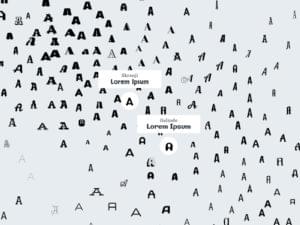Yesterday Google announced WebM, a new web media project that combines the VP8 codec (which Google acquired in its purchase of On2) with the Vorbis audio codec and parts of the Matroska multimedia container. As part of this project Google has open-sourced the VP8 codec, which could have far-reaching consequences for the future of video in HTML5.
If you’re late to the HTML video game, here’s the play-by-play: the upcoming HTML5 specifications include a <video> tag, which is intended to provide integrated video playback in web pages without the need for a third-party plugin (the browser would provide the necessary video decoding and playback controls). However, the HTML5 spec doesn’t specify a particular codec to be used for the video content. At present, the state of browser support is varied: Google Chrome and Safari both support the proprietary H.264 codec, with both browsers’ parent companies paying licensing fees to include the codec. Chrome, Opera, and Firefox all support the Ogg Theora codec, a free and open source alternative that many say provides inadequate quality. IE currently supports neither, but has confirmed that the upcoming version 9 will support H.264.
Up until recently, this was a standoff: Apple and Microsoft won’t use Theora because they say it lacks the performance of H.264, and Opera and Mozilla refuse to use H.264 because it’s patent-encumbered and they want to avoid paying licensing fees.
Enter Google. In August of 2009 it acquired On2, the company that owned the up-and-coming VP8 codec, which was rumored to offer comparable performance to H.264. At the time there were murmurs that Google planned to open source the codec, thus potentially putting an end to the “video wars” once and for all. Well, that’s exactly what Google has done.
The open sourcing of the VP8 codec comes as part of Google’s launch of the new Open Web Media project it’s calling WebM. The details can be found on the new project’s first blog post.
The new WebM project has already received support from Mozilla (who has announced that it will be supported along with Theora for HTML5 video in Firefox 4), Opera (who has already released a “Labs” build of its browser with WebM video support), and Adobe (who has confirmed that the VP8 codec will be included in an upcoming release of the Flash player). Microsoft has taken a more nuanced approach, stating that, “In its HTML5 support, IE9 will support playback of H.264 video as well as VP8 video when the user has installed a VP8 codec on Windows.”
Of course, it goes without saying that Google Chrome will be supporting the new format in the near future. A post on the Chromium blog states that preliminary support for WebM is already available in development versions of the browser.
Of course, there’s still one major player missing from that list: Apple. The Guardian Technology Blog reports on an email reply from Steve Jobs to a reader asking about Apple’s position on the new video codec. Jobs simply links to a forum thread on the X.264 developers’ forum, pointing out current technical weaknesses of the codec as a specification. Of course, WebM as it currently stands is labeled as a “developer preview,” so of course those issues could potentially be resolved by the time an official release rolls around.
Moreover, if Google proceeds with converting the existing YouTube library of clips to VP8 and making them available in an HTML5, Apple’s position might prove to be untenable, and VP8 support could find its way into Safari. In fact, Google has already stated, on the WebM FAQ, that “all videos that are 720p or larger uploaded to YouTube after May 19th will be encoded in WebM as part of its HTML5 experiment.” This appears to mean that if you’re viewing the experimental HTML5 YouTube pages using a nightly build of Firefox or Opera, you can already view WebM-encoded video in the wild.
This is certainly an exciting development, and one which appears to bring the dream of open video on the Web one step closer to reality. What’s your take on what this holds for the future of web video?
Louis joined SitePoint in 2009 as a technical editor, and has since moved over into a web developer role at Flippa. He enjoys hip-hop, spicy food, and all things geeky.






